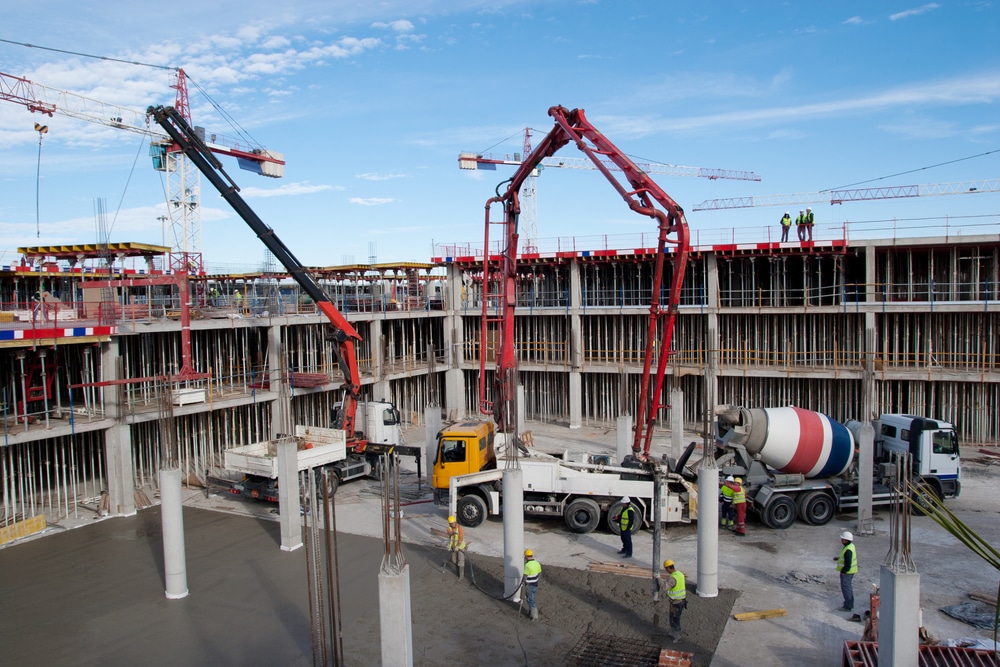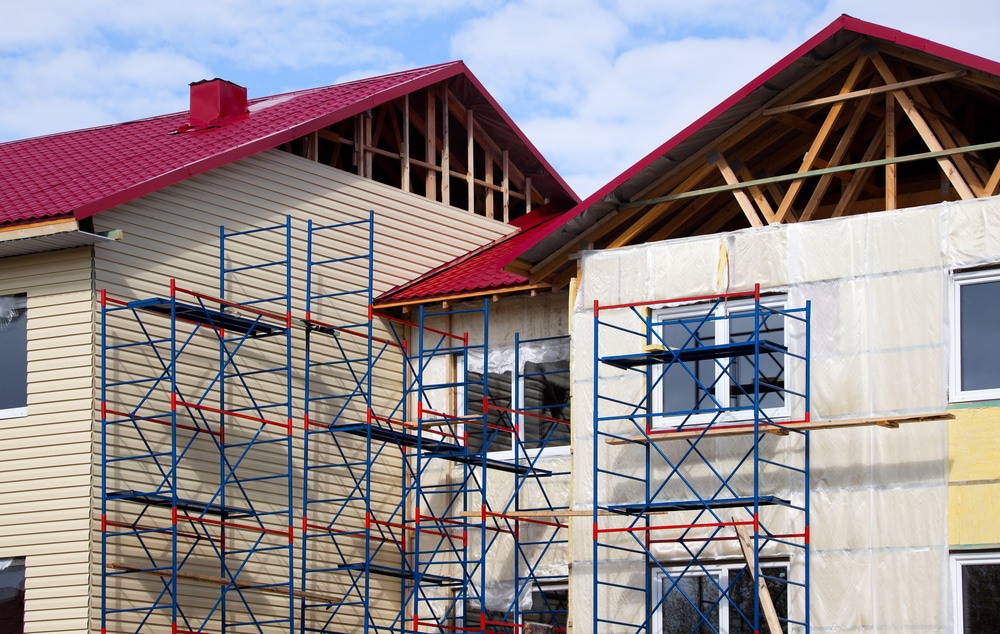It’s already been two years since the publication of Mark Farmer’s review of the construction labour model in the UK, entitled “Modernise or Die”, and some encouraging steps in the right direction have started to become visible.
The construction industry, and especially the housebuilding sector, seem to take on the challenge and gradually transform the way they design, collaborate, and build. The NHBC Foundation, in collaboration with Mark Farmer, just published a very interesting report on this new reality that is emerging in the sector.
The first report findings are very encouraging. It appears that the industry stands united under the goal of improving predictability with regards to quality, time and cost. That is extremely important if we take into account that the construction industry is under substantial pressure at the moment due to a number of reasons.
More specifically, the lack of a skilled workforce, Brexit, and global urbanisation are some of the factors that have a strong impact on the industry and stimulate risk. Ulrik Branner, Executive and Board Member at LetsBuild, analysed recently four megatrends that he believes will shape the construction industry in the near future:
Under these circumstances, more and more housebuilders realise that they need to readjust their existing systems and processes in order to establish a healthier home production model.
“Any attempt to increase total home/house-building output without improving processes and productivity will result in the predictability of delivery outcomes deteriorating further, reputational damage associated with poor build quality and increased risk of financial failure.”, underlines Mark Farmer in the Foreword of the report.
The good news is that the report revealed some very promising activity in the sector in terms of addressing these challenges through strategic partnerships, better collaboration across the supply chain, and vertical integration of the manufacturing capability.
What is important to keep in mind, as Mark Farmer suggests, is that we need to avoid the mistakes of the past when it comes to offsite construction and the way in which the industry perceives it. A combination of onsite and offsite manufacturing with traditional construction processes seems to be the ideal destination for the industry’s journey.
An introduction to the report
By the term “Modern Methods of Construction” (MMC), the report refers to a broad range of innovative techniques which could either substitute or transform traditional house building. Simply put, this concept refers to a plethora of alternatives from modular construction to innovative materials and processes which could shorten the project’s cycle and contribute to notable budget and time savings.
The quest for innovative techniques in the sector isn’t new. For decades, the construction industry tries to accelerate delivery, minimise labour costs and improve the quality of construction. But it appears that at the moment there is a more conscious effort in that direction. And the results of the report can be an encouraging indication for that.
Read also: Homebuilding guide – Gaining control over multiple projects and developments
The main objective behind this substantial effort was to acquire a more thorough understanding of the type of innovation that is underway in housing development. Housing associations, housebuilders, local authorities, investors, and SME developers participated in the research providing valuable data about the systems they have or intend to implement as well as their current and future project plans.
The research was divided into three distinct stages:
- Overview of activity related to Modern Methods of Construction
- Online survey
- Case studies
A sneak peek into the survey findings
In this article, we focus on the survey findings as they provide some really interesting feedback in regard to the current and future state of the housebuilder sector. Nevertheless, by downloading the full report, you can acquire more information concerning the actions that specific players in the industry have taken in order to embrace innovation.
Without further ado, here are the most eye-catching findings from the NHBC report:
Current and future state of the sector
The first part of the survey puts extra attention to the current and future construction methods that house developers follow. In this category, the results are quite promising as 69% of the participants stated that they already use modern methods of construction. On top of that, the vast majority of them are planning to adopt a more innovative approach in the near future.
Only 8% of those asked said that they have no intention to look into expanding the use of modern methods of construction in the future. In any case, though, the results are regarded as positive given the tendency of house developers to embrace innovation.

- Source: Modern methods of construction: who’s doing what by NHBC Foundation
MMC systems and technologies
Another question that survey participants had to answer was related to the types of MMC that they were using. For those who hadn’t adopted any innovative methods of construction yet, the question concerned their future plans in that direction.
Based on the findings, offsite volumetric modules and offsite panelised systems appear to gain very good momentum as they were already used or planned to be used by 61% of the developers who took part in the research.
To the contrary, offsite hybrid systems and onsite modern methods of construction seem to have fewer supporters. Nonetheless, this isn’t necessarily negative given the generally positive inclination towards innovative building methods.

- Source: Modern methods of construction: who’s doing what by NHBC Foundation
Level of investment in modern methods of construction
The next graphic is a very interesting visualisation of the choices made by developers in terms of investment. A non-surprising, but very positive finding, has to do with the fact that research and development are attracting more and more investment activity. This will allow the industry to evolve further and adopt new revolutionary methods of construction.
Establishing strategic partnerships and supply chains is another area of great interest for the sector stakeholders as illustrated by the current research. What’s also eye-catching is that 29% of the respondents have already invested in a manufacturing facility which is a decision of great strategic importance as it will allow developers to accelerate and gain better control over the building process.

- Source: Modern methods of construction: who’s doing what by NHBC Foundation
Catalysts for innovation
What are the main drivers for this groundbreaking paradigm shift? The participants of the NHBC research offered some very useful replies which are a direct reflection of their biggest pains and visions for the sector’s future.
As shown on the graph below, quality improvement, increased efficiency and productivity, and accelerated delivery are some of the most crucial factors who pushed developers to the use of modern methods of construction.
Labour skills shortage, sustainability, and standardisation are also indispensable drivers for embracing innovation in the industry and potentially a clear message that a decisive change is required.

- Source: Modern methods of construction: who’s doing what by NHBC Foundation
Factors that could hinder investment
Last but certainly not least, the factors which could function as barriers to future investment. Procurement and manufacturing capacity appear to generate some serious problems for the industry, as 31% of the study participants pointed them out as the top two barriers to the further development of MMC.
Interestingly enough, skills shortage appeared to be the least of developers’ concerns while planning systems, lenders, and mortgage-ability were three factors which were cited often.

- Source: Modern methods of construction: who’s doing what by NHBC Foundation
Final word
The NHBC report does an excellent job of demonstrating the level of engagement and interest in modern methods of construction in the industry. Despite the size of the sample, it is evident that the vast majority of developers have become more open toward innovation.
Nonetheless, one of the biggest challenges moving forward is to combine these new techniques with traditional house-building methods. Finding the right balance can truly make a difference. Modular construction seems to be an area of great opportunity for the sector as it could boost productivity and allow for fewer delays and budget overruns.

The issue of standardisation is also of paramount importance for house developers. That can also be supported by the fact that 24% of the companies that took part in the research mentioned that they are investigating the possibility of investing in a factory (either alone or through a partner scheme).
In any case, parameters such as increased efficiency, shorter project cycle, and better quality of construction are some of the main priorities for the research participants. That’s very hopeful for the sector’s future.
However, as it is underlined in the NHBC report, we should not overlook the skilled labour shortage. Especially if Brexit proceeds, it is expected to be a catalyst for digital adoption.
Another interesting point made in the research is that the openness of house developers to modern methods of construction should not always be taken for granted. There is still considerable uneasiness from the stakeholders who are in an early stage of their digital journey.
Hopefully, such efforts as the one made by the NHBC Foundation and Mark Farmer can help in alleviating their concerns and accelerate their transition to the digital era. All in all, though, it is safe to claim that the housebuilding sector is changing.




